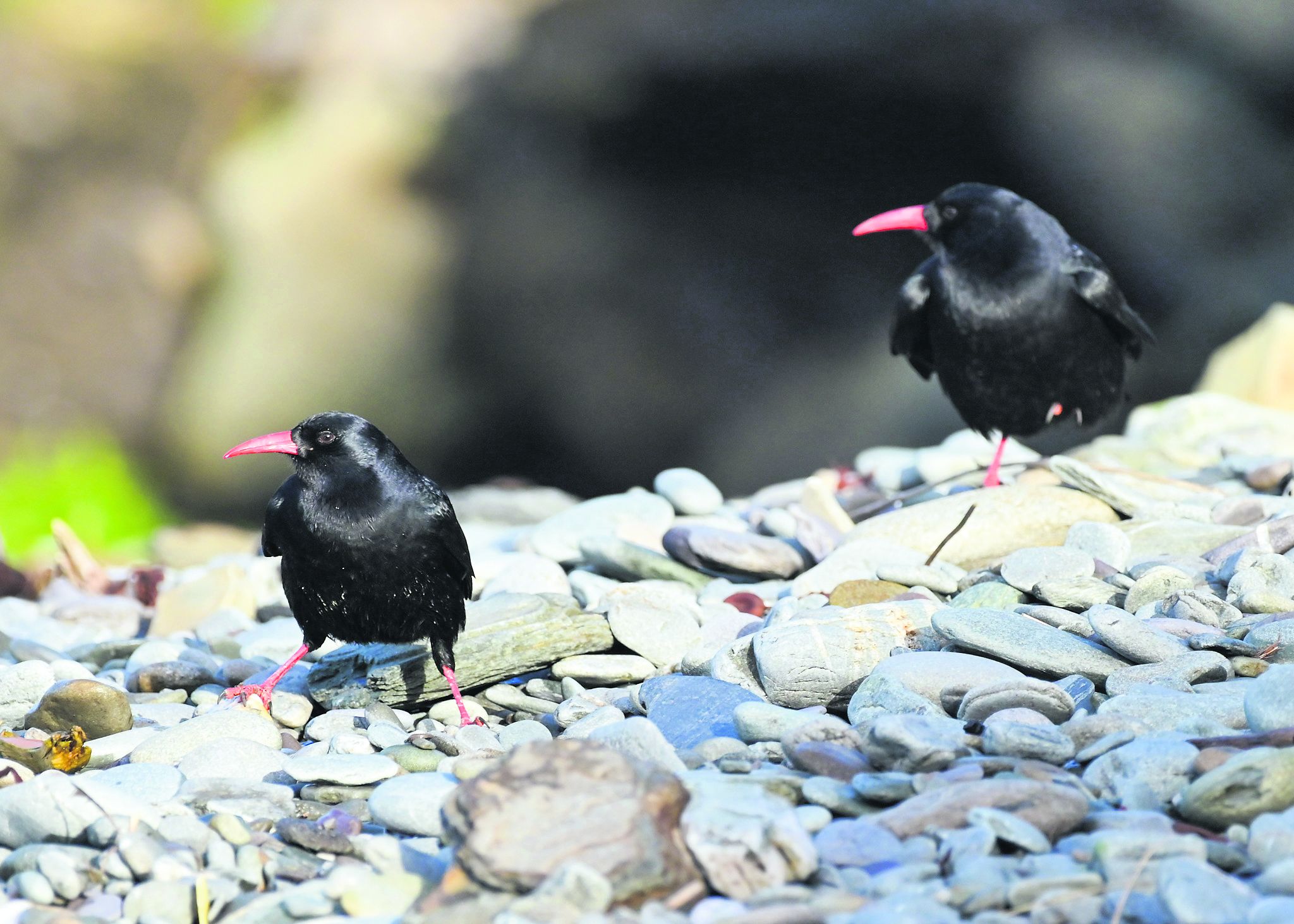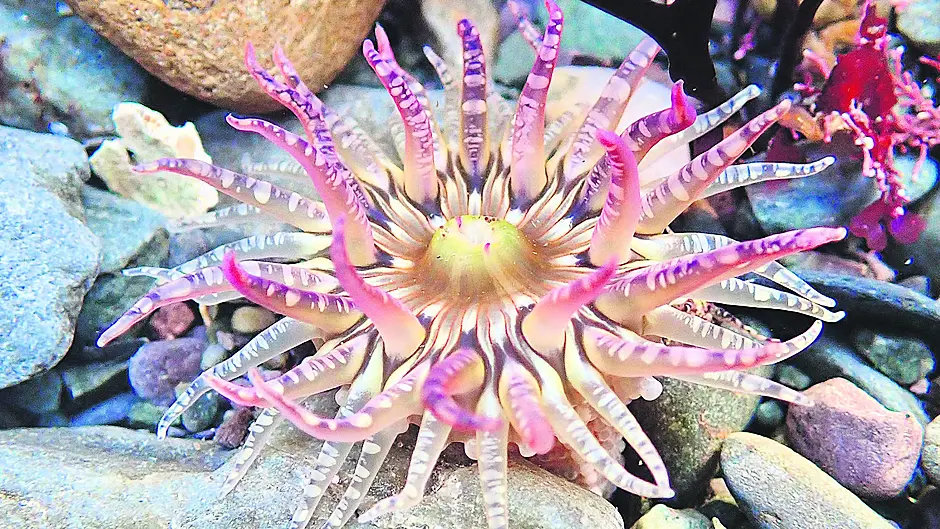IF you are a regular reader of this column, you will know that I often encourage people to spend time outdoors in nature.

It benefits both your physical and mental health, and best of all, it is free to enjoy. While I do follow my own advice, it can be helpful at times to have a specific purpose to keep motivated.
For the past few years, my family and I have found that purpose by taking part in the annual autumn Coastwatch survey, which has become something we thoroughly enjoy.
 Choughs are curious birds and watched us while we surveyed the shore at Toe Head. (Photo: Nick Haigh)
Choughs are curious birds and watched us while we surveyed the shore at Toe Head. (Photo: Nick Haigh)
Citizen scientists
Citizen science has gained popularity recently, and despite the buzzword status, its actions and outcomes are invaluable.
It involves engaging the public in scientific research to expand knowledge, often referred to as harnessing ‘people power’.
Participants from all walks of life are empowered to collect, record, and report data, gaining hands-on experience in the process.
Many organisations running these projects provide training, ensuring volunteers learn as they contribute.
In West Cork, there are numerous opportunities to participate in citizen science, particularly in biodiversity projects, allowing individuals to help deepen the understanding of our local environment.
Examples include recording wildlife sightings with the National Biodiversity Data Centre, logging marine litter with Clean Coasts, spotting otters with Cork Nature Network, and volunteering for Coastwatch.
Marine sightings
Started in the 1980s, the Coastwatch survey is Ireland’s longest-running citizen science project focused on the coastline.
Each volunteer, or group, selects one or more 500-metre-long seashore survey units and collects information and sightings at low tide to submit via an online form.
This year we adopted three survey units.
The survey is particularly focused on marine litter, water quality, and biodiversity.
Information is then pooled from all the sites around Ireland to provide a snapshot of the environmental health of our coastline.
Many delights
October has been a spectacular month for natural wonders. The highlight, unrelated to the coast, was undoubtedly the breath-taking Northern Lights, or Aurora Borealis, which we were fortunate to witness on October 10th.
This stunning phenomenon, caused by the interaction of charged particles from solar winds with the Earth’s magnetic field, was especially vivid this year due to the peak of the solar cycle, which occurs every 11 years.
The timing of this being coupled with clear skies over West Cork felt like nothing short of a miracle.
Equally awe-inspiring, however, were some of the discoveries made during our coastal survey.
The seashore is truly a sensory feast; the vibrant colours of various seaweeds, the flower-like beauty of sea anemones, the sound of waves gently shifting stones, and the fresh ocean air mixed with unique scents like the fragrance of pepper dulse seaweed.
Ongoing concerns
The annual results from across the island usually reveal some recurring issues.
It will be interesting to see this year’s results when they are made public. These issues usually include marine litter, pollution from sewage and agricultural run-off, and the spread of invasive species like Japanese wireweed (Sargassum muticum).
During our survey, we did find Japanese wireweed at Toe Head, but this was no surprise as it has now become relatively common on our shores.
The issue with this invasive species is that it spreads rapidly and outcompetes native seaweeds. It forms dense mats that float on the surface, blocking light to species below and, ultimately, diminishes biodiversity.
Coastwatch is currently running pilot removal schemes to determine the most effective and appropriate methods to address this issue.
Positive findings
These concerns are often balanced by positive discoveries, such as new seagrass beds and honeycomb worm reefs, both of which provide essential habitats for marine life and promote biodiversity.
Seagrass, in particular, offers significant benefits, including carbon storage, water quality improvement, and seabed stabilisation.
It is crucial that initiatives like the Coastwatch survey continue to monitor these vital environmental assets to ensure their protection. We also observed a lower-than-usual level of marine litter this year.
It appears that more West Cork residents are actively picking up and removing litter from our beaches, which is both encouraging and heartening.
Let’s hope this continues, more of that from all of us, please!
Watched watchers
One quirk of our surveying this year was that, while we were volunteer Coastwatchers, we were also being watched ourselves.
It was a delight to share the beach with a pair of choughs during one of our surveys. As they foraged for invertebrates in the decaying seaweed, these vocal birds watched us closely; seemingly curious about the humans searching for biodiversity.
Choughs are remarkable birds, and if you haven’t spotted them along the West Cork coast yet, I highly recommend it.
They are members of the crow family, similar in size to jackdaws but entirely black with distinctive red legs and beaks.
You will likely hear their sharp, high-pitched, repetitive call before you see them.
Against the backdrop of the ocean, their calls are iconic to me and capture the spirit of the Wild Atlantic Way.
They’re also impressive aerial acrobats, often swooping, soaring and performing barrel rolls.
Call to action
Coastwatch, an environmental NGO, proudly relies on public participation and ‘citizen science’.
Although this year’s autumn survey closed on October 22nd, it is worth keeping an eye on their website (www.coastwatch.org) and social media, as they often seek volunteers for initiatives like monitoring marine litter, searching for seagrass, and identifying and recording invasive species such as Japanese wireweed.
You could also plan to join next year’s survey and review the available training materials. There is no need for an excuse to enjoy our beautiful coastline, but contributing to this important work adds extra meaning to your time outdoors.







